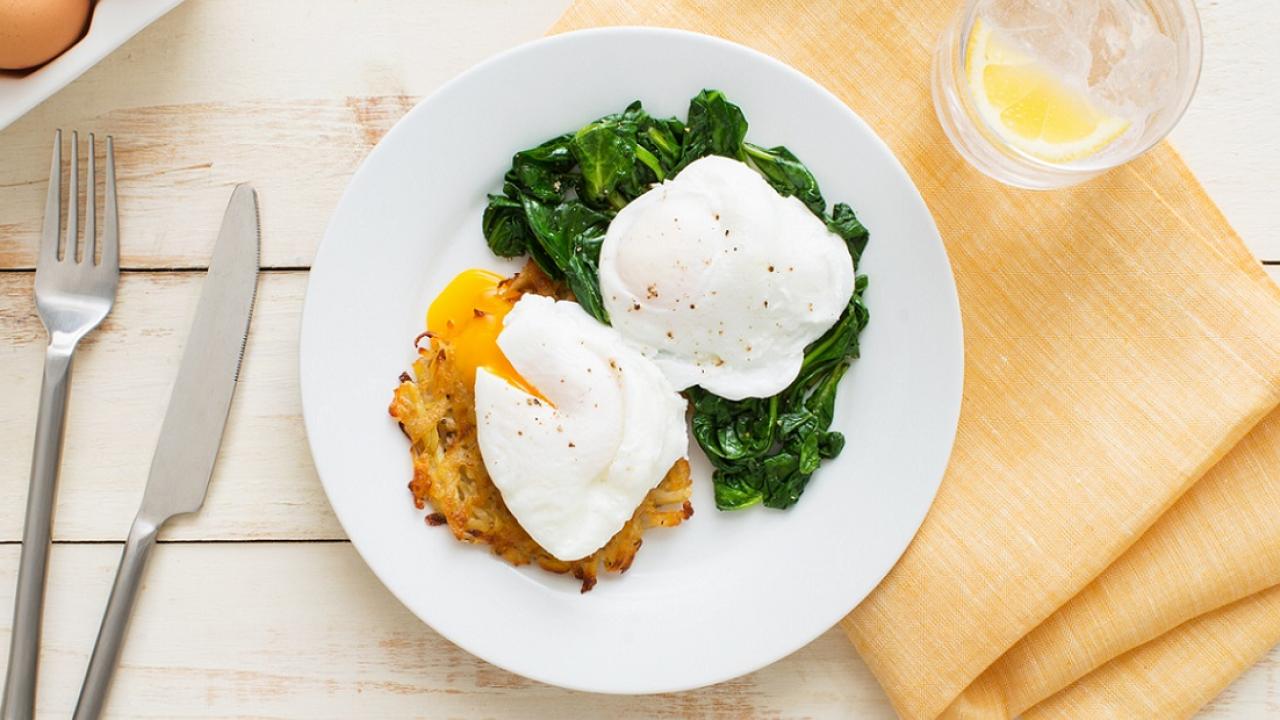3 Top Tips to Making the Perfectly Poached Egg

A perfectly poached egg is a thing of beauty.
When done well, poached eggs have a way of enhancing the look and taste of any meal. Don’t be surprised if you end up staring at your food a bit too long or obsessing over the perfect shot for Instagram—don’t worry, we won’t judge you!
Despite these benefits, the art (and science) of egg poaching can sometimes be shelled in a haze of secrecy. Truth be told, anyone can make the perfectly poached eggs.
Well, we’re here to break some good news to you! There is nothing mysterious about making poached eggs—the process or the final product! Contrary to popular belief, egg poaching is one of the easiest, healthiest, and dare we say, most impressive ways to enjoy iron, vitamin A and protein!
There’s a little more finesse needed for the perfect poach than you might think, so check out our three top tips below:
1. Always start with a fresh egg
When poaching an egg, it is recommended you use fresh eggs because of the “yolk quality”. In a fresh egg, the yolk sits up high, and the white is thick and closely surrounds the yolk. An older egg has a flat yolk that breaks easily, and a thin, watery white. Canadian eggs make it from the farm to the store in about a week, so the sooner you poach ‘em after picking them up, the better off you’ll be.
Remember: Fresh eggs make the best poached eggs!
2. Go easy with the H20
As any painter worth their salt knows, the line between a good and great piece of art is wafer—thin; the smallest detail can either heighten or hinder the final product. This thinking applies to poached eggs, too.
(And yes, we realize we just compared poached eggs to fine art!)
You don’t need a deep pot and a gallon of water to poach an egg—an inch or two in your pot is perfectly fine. The right amount of water is important because it prevents the fresh egg from bobbing everywhere and changing shape, which in turn gives you a picture—perfect poach.
Remember: Too much of anything (in this case, water) is bad.
3. Dump not, want not!
Another top tip to remember when poaching an egg is to carefully ease the egg into simmering water: don’t just dump it! Most people hurriedly crack the egg into the simmering pot. While this step might seem trivial, it is one that keeps the yolk and white intact. Crack your egg and delicately drop it into the water as close to the surface as you can without burning your fingers! Alternatively, crack your egg into a bowl to gently lower it in.
Remember: Slow and steady wins the race.
There you have it, three simple suggestions to help with your egg poaching endeavours—Godspeed! Let us know how well you get on, and if you have any other suggestions.
Get cracking, folks!